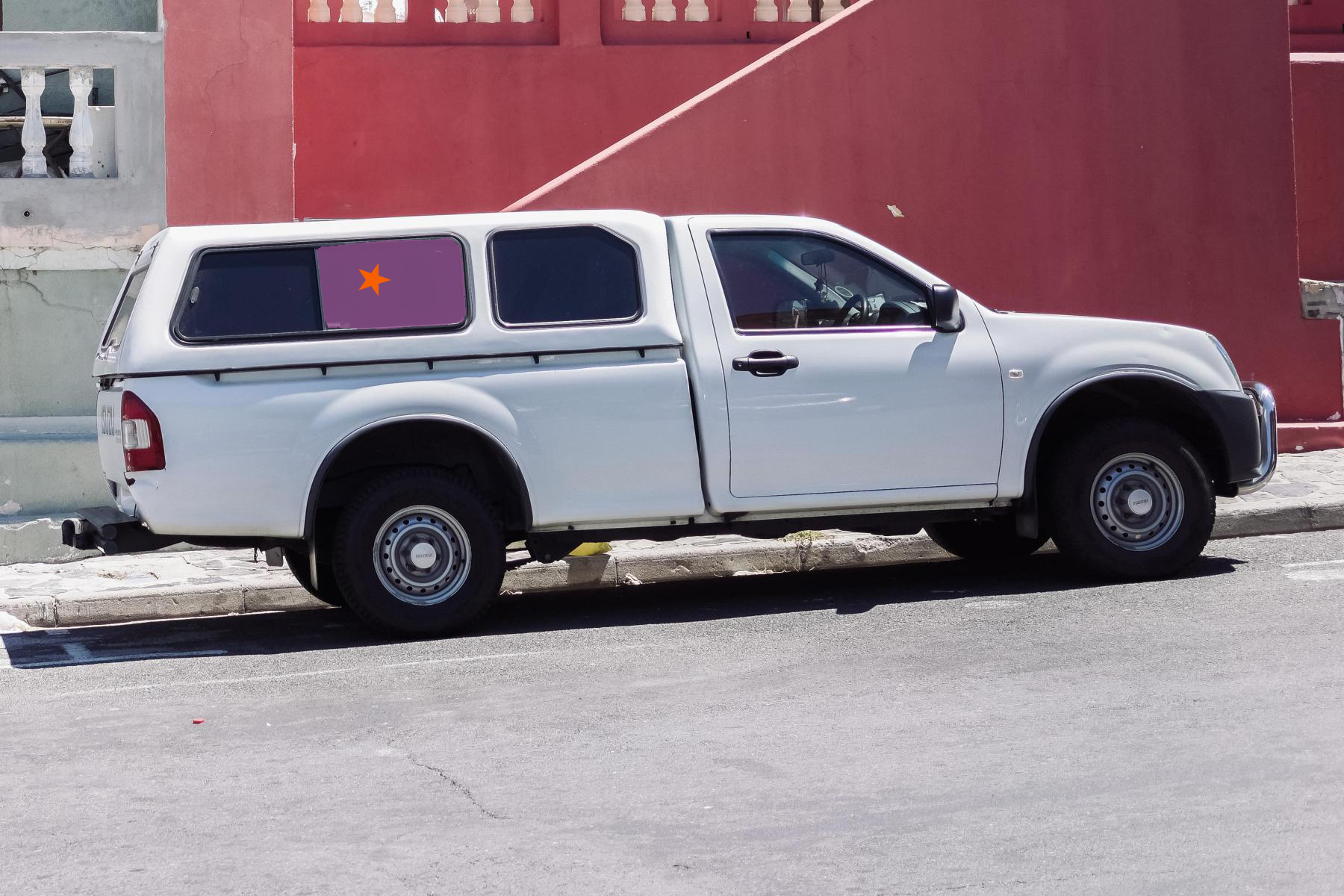Segment anything 2 example¶
Mask generation is the task of generating masks that identify a specific object or region of interest in a given image.
In this example, you learn how to implement inference code with a ModelZoo model to generate mask of a selected object in an image.
The source code can be found at SegmentAnything2.java.
Setup guide¶
To configure your development environment, follow setup.
Run segment anything 2 example¶
Input image file¶
You can find the image used in this example:

Build the project and run¶
Use the following command to run the project:
cd examples
./gradlew run -Dmain=ai.djl.examples.inference.cv.SegmentAnything2
Your output should look like the following:
[INFO ] - Number of inter-op threads is 12
[INFO ] - Number of intra-op threads is 6
[INFO ] - Segmentation result image has been saved in: build/output/sam2.png
[INFO ] - [
{"class": "", "probability": 0.92789, "bounds": {"x"=0.000, "y"=0.000, "width"=1800.000, "height"=1200.000}}
]
An output image with bounding box will be saved as build/output/sam2.png:

Reference - how to import pytorch model:¶
The original model can be found:
The model zoo model was traced with sam2==0.4.1 and transformers==4.43.4
install dependencies¶
pip install sam2 transformers
trace the model¶
import os
import sys
from typing import Any
import torch
from sam2.modeling.sam2_base import SAM2Base
from sam2.sam2_image_predictor import SAM2ImagePredictor
from torch import nn
class Sam2Wrapper(nn.Module):
def __init__(self, sam_model: SAM2Base, multimask_output: bool) -> None:
super().__init__()
self.model = sam_model
self.image_encoder = sam_model.image_encoder
self.no_mem_embed = sam_model.no_mem_embed
self.mask_decoder = sam_model.sam_mask_decoder
self.prompt_encoder = sam_model.sam_prompt_encoder
self.img_size = sam_model.image_size
self.multimask_output = multimask_output
self.sparse_embedding = None
@torch.no_grad()
def encode(self, x: torch.Tensor) -> tuple[Any, Any, Any]:
backbone_out = self.image_encoder(x)
backbone_out["backbone_fpn"][0] = self.model.sam_mask_decoder.conv_s0(
backbone_out["backbone_fpn"][0])
backbone_out["backbone_fpn"][1] = self.model.sam_mask_decoder.conv_s1(
backbone_out["backbone_fpn"][1])
feature_maps = backbone_out["backbone_fpn"][-self.model.
num_feature_levels:]
vision_pos_embeds = backbone_out["vision_pos_enc"][-self.model.
num_feature_levels:]
feat_sizes = [(x.shape[-2], x.shape[-1]) for x in vision_pos_embeds]
# flatten NxCxHxW to HWxNxC
vision_feats = [x.flatten(2).permute(2, 0, 1) for x in feature_maps]
vision_feats[-1] = vision_feats[-1] + self.no_mem_embed
feats = [
feat.permute(1, 2, 0).reshape(1, -1, *feat_size)
for feat, feat_size in zip(vision_feats[::-1], feat_sizes[::-1])
][::-1]
return feats[0], feats[1], feats[2]
@torch.no_grad()
def forward(
self,
image_embed: torch.Tensor,
high_res_feats_0: torch.Tensor,
high_res_feats_1: torch.Tensor,
point_coords: torch.Tensor,
point_labels: torch.Tensor,
mask_input: torch.Tensor,
has_mask_input: torch.Tensor,
):
sparse_embedding = self._embed_points(point_coords, point_labels)
self.sparse_embedding = sparse_embedding
dense_embedding = self._embed_masks(mask_input, has_mask_input)
high_res_feats = [high_res_feats_0, high_res_feats_1]
image_embed = image_embed
masks, iou_predictions, _, _ = self.mask_decoder.predict_masks(
image_embeddings=image_embed,
image_pe=self.prompt_encoder.get_dense_pe(),
sparse_prompt_embeddings=sparse_embedding,
dense_prompt_embeddings=dense_embedding,
repeat_image=False,
high_res_features=high_res_feats,
)
if self.multimask_output:
masks = masks[:, 1:, :, :]
iou_predictions = iou_predictions[:, 1:]
else:
masks, iou_pred = (
self.mask_decoder._dynamic_multimask_via_stability(
masks, iou_predictions))
masks = torch.clamp(masks, -32.0, 32.0)
return masks, iou_predictions
def _embed_points(self, point_coords: torch.Tensor,
point_labels: torch.Tensor) -> torch.Tensor:
point_coords = point_coords + 0.5
padding_point = torch.zeros((point_coords.shape[0], 1, 2),
device=point_coords.device)
padding_label = -torch.ones(
(point_labels.shape[0], 1), device=point_labels.device)
point_coords = torch.cat([point_coords, padding_point], dim=1)
point_labels = torch.cat([point_labels, padding_label], dim=1)
point_coords[:, :, 0] = point_coords[:, :, 0] / self.model.image_size
point_coords[:, :, 1] = point_coords[:, :, 1] / self.model.image_size
point_embedding = self.prompt_encoder.pe_layer._pe_encoding(
point_coords)
point_labels = point_labels.unsqueeze(-1).expand_as(point_embedding)
point_embedding = point_embedding * (point_labels != -1)
point_embedding = (point_embedding +
self.prompt_encoder.not_a_point_embed.weight *
(point_labels == -1))
for i in range(self.prompt_encoder.num_point_embeddings):
point_embedding = (point_embedding +
self.prompt_encoder.point_embeddings[i].weight *
(point_labels == i))
return point_embedding
def _embed_masks(self, input_mask: torch.Tensor,
has_mask_input: torch.Tensor) -> torch.Tensor:
mask_embedding = has_mask_input * self.prompt_encoder.mask_downscaling(
input_mask)
mask_embedding = mask_embedding + (
1 - has_mask_input
) * self.prompt_encoder.no_mask_embed.weight.reshape(1, -1, 1, 1)
return mask_embedding
def trace_model(model_id: str):
if torch.cuda.is_available():
device = torch.device("cuda")
else:
device = torch.device("cpu")
model_name = f"{model_id[9:]}"
os.makedirs(model_name, exist_ok=True)
predictor = SAM2ImagePredictor.from_pretrained(model_id, device=device)
model = Sam2Wrapper(predictor.model, True)
input_image = torch.ones(1, 3, 1024, 1024).to(device)
high_res_feats_0, high_res_feats_1, image_embed = model.encode(input_image)
# trace decoder model
embed_size = (
predictor.model.image_size // predictor.model.backbone_stride,
predictor.model.image_size // predictor.model.backbone_stride,
)
mask_input_size = [4 * x for x in embed_size]
point_coords = torch.randint(low=0,
high=1024,
size=(1, 5, 2),
dtype=torch.float)
point_labels = torch.randint(low=0, high=1, size=(1, 5), dtype=torch.float)
mask_input = torch.randn(1, 1, *mask_input_size, dtype=torch.float)
has_mask_input = torch.tensor([1], dtype=torch.float)
converted = torch.jit.trace_module(
model, {
"encode":
input_image,
"forward": (image_embed, high_res_feats_0, high_res_feats_1,
point_coords, point_labels, mask_input, has_mask_input)
})
torch.jit.save(converted, f"{model_name}/{model_name}.pt")
# save serving.properties
serving_file = os.path.join(model_name, "serving.properties")
with open(serving_file, "w") as f:
f.write(
f"engine=PyTorch\n"
f"option.modelName={model_name}\n"
f"translatorFactory=ai.djl.modality.cv.translator.Sam2TranslatorFactory\n"
f"encode_method=encode\n")
if __name__ == '__main__':
hf_model_id = sys.argv[1] if len(
sys.argv) > 1 else "facebook/sam2-hiera-tiny"
trace_model(hf_model_id)